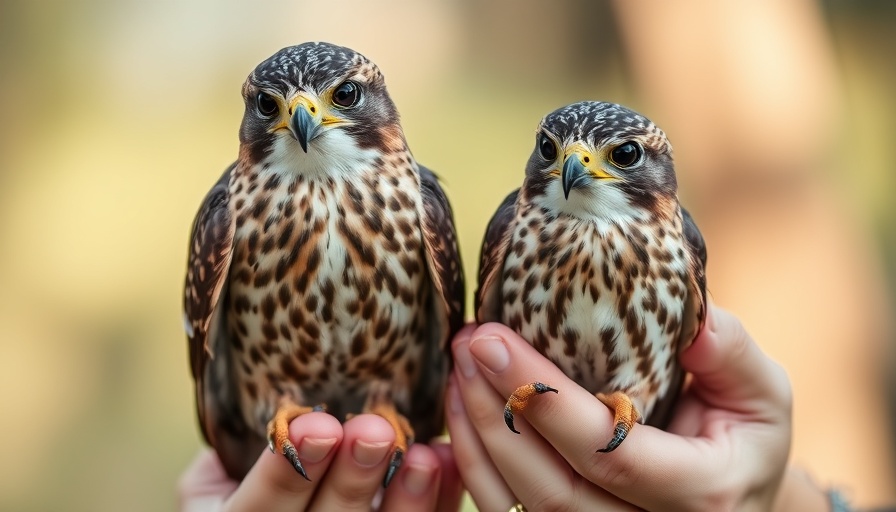
Understanding Size Differences Among Sharp-shinned Hawks
Sharp-shinned Hawks—elegant predators familiar to bird watchers—exhibit a fascinating sexual dimorphism that baffles many. This stark size difference is atypical in the avian world where males tend to be larger. In the case of these agile hunters, females stand noticeably taller and can weigh nearly twice as much as their male counterparts. This remarkable trait allows them to hunt efficiently in varying ecological niches.
Why Size Matters
The female Sharp-shinned Hawk's larger size offers significant advantages, particularly when it comes to nesting and courtship behaviors. During mating season, her size likely provides her with an edge in asserting dominance, an essential factor given that these hawks are aggressive bird-hunters. Meanwhile, the smaller male's hunting strategy tends to focus on smaller prey, which complements the female's foraging and ensures that they both access a broader food supply. This cooperative behavior not only sustains their nesting efforts but also reflects a fascinating aspect of avian life—resource sharing based on size and skill.
The Role of Male Sharp-shinned Hawks
Despite being smaller, male Sharp-shinned Hawks play a crucial role within their mated pair. They conduct much of the hunting during nesting times while the female focuses on incubating eggs and caring for their hatchlings. This division of labor maximizes their young's survival prospects. Indeed, during the birthing period, a well-fed chick is often linked to its father's success in bringing home food. Such dynamics are essential for understanding predator-prey relationships, particularly how size influences resource management.
The Importance of Observation
Bird enthusiasts recognize that witnessing these hawks in action offers unique insights into their behaviors. Whether in urban parks or extensive woodlands, Sharp-shinned Hawks represent an essential part of the ecosystem. By observing these nuanced interactions, one can appreciate the evolutionary adaptations that shape their behavior and roles within their environments.
 Add Row
Add Row  Add
Add 




Write A Comment